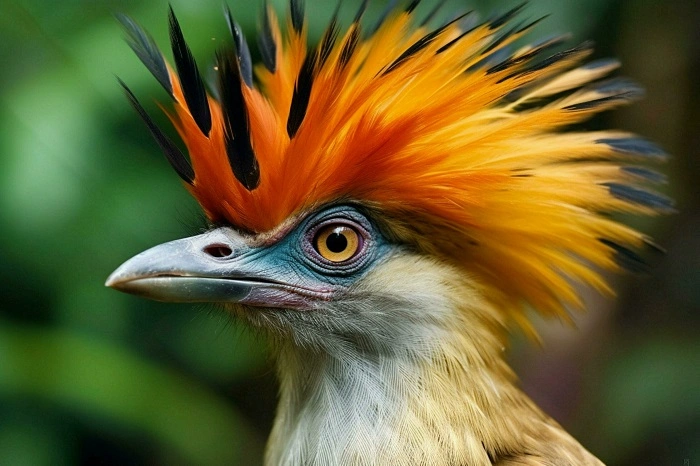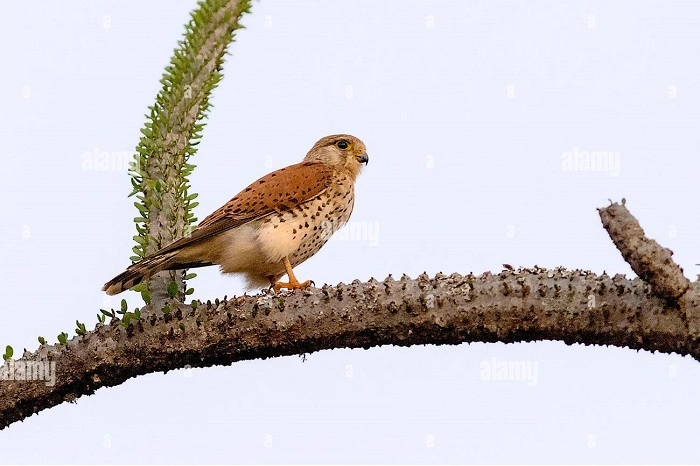Madagascar, the world’s fourth-largest island, is known for its incredible biodiversity and endemic species found nowhere else on Earth. The island’s diverse habitats, ranging from rainforests and dry spiny forests to coastal mangroves and wetlands, are home to a remarkable array of birds. Many of Madagascar’s avian species are unique to the island, having evolved in isolation over millions of years. In this article, we will explore some of the most fascinating birds of Madagascar, their behaviors, adaptations, and the conservation efforts to protect these extraordinary creatures.
Introduction to the Birds of Madagascar
Madagascar’s avian fauna is a testament to the island’s isolation and diverse ecosystems. Over 100 bird species are endemic to Madagascar, meaning they are found only on this island. The island’s unique environmental conditions, from dense tropical forests to vast dry regions, have shaped the evolution of its bird species, making them some of the most specialized and distinct birds in the world.
The birds of Madagascar exhibit a wide variety of behaviors, colors, and forms, from the majestic raptors that rule the skies to the small, colorful songbirds that fill the forests with their calls. Unfortunately, many of these bird species are endangered due to habitat destruction, invasive species, and climate change, making conservation efforts critical to their survival.
In this article, we’ll highlight some of the most remarkable birds of Madagascar, discussing their adaptations, behaviors, and the challenges they face in today’s world.
Notable Birds of Madagascar
Madagascar Pochard (Aythya innotata)
The Madagascar Pochard is one of the rarest and most critically endangered birds on the planet. Once thought to be extinct, this diving duck was rediscovered in 2006, and conservationists have since worked tirelessly to protect its population.
Key Features
- Size: The Madagascar Pochard is a medium-sized diving duck, measuring about 40-50 cm in length.
- Diet: These ducks feed primarily on aquatic plants, seeds, and small invertebrates found in freshwater lakes and wetlands.
- Habitat: The Madagascar Pochard is found in high-altitude lakes in the north of Madagascar, particularly Lake Matsaborimena.
- Conservation Status: The bird is critically endangered, with only a few dozen individuals remaining in the wild. Conservation efforts, including captive breeding programs, are ongoing to help restore the population.
Madagascar Fish Eagle (Haliaeetus vocifer sides)
This striking raptor is the top predator in Madagascar’s freshwater ecosystems. The Madagascar Fish Eagle is a large bird of prey, and like many raptors, it plays a crucial role in maintaining the health of the ecosystem by controlling populations of fish and other prey species.
Key Features
- Size: The Madagascar Fish Eagle has a wingspan of about 2 meters (6.6 feet) and a powerful, hooked beak.
- Diet: As its name suggests, the Madagascar Fish Eagle primarily feeds on fish, especially freshwater species found in the island’s rivers and lakes.
- Habitat: This eagle prefers large, freshwater lakes, rivers, and wetlands, where it can find its preferred fish prey.
- Conservation Status: The Madagascar Fish Eagle is classified as critically endangered, with fewer than 100 individuals remaining in the wild. Habitat loss and pollution are major threats to this majestic bird’s survival.
Vanga (Vanga imitator)
Vangas are a family of birds unique to Madagascar, and their fascinating appearance and behavior make them one of the most interesting avian groups on the island. The Vanga imitator, in particular, is known for its ability to mimic other bird species’ calls, a trait that sets it apart from most birds.
Key Features
- Size: Vangas vary in size, but they are generally medium-sized songbirds.
- Diet: These birds are omnivorous, feeding on insects, small vertebrates, and fruits.
- Habitat: Vangas are found in Madagascar’s forested regions, from tropical rainforests to dry deciduous forests.
- Behavior: Known for their diverse range of calls, Vangas are skilled mimic vocalists, sometimes copying the calls of other birds in their territory.
- Conservation Status: While some Vanga species are common, others, like the Vanga imitator, face threats due to habitat loss, making conservation efforts essential.
Madagascar Parrot (Eclectus roratus)
Madagascar is home to various species of parrots, and one of the most beautiful is the Madagascar Parrot, a subspecies of the Eclectus parrot. These parrots are known for their vibrant plumage and unique behavior.
Key Features
- Coloration: The male Madagascar Parrot is predominantly green with red markings, while the female has a more subdued green body with blue and purple accents.
- Diet: They feed primarily on fruits, seeds, and nuts found in Madagascar’s forests.
- Habitat: Madagascar Parrots are found in tropical forests and woodlands, where they nest in tall trees.
- Conservation Status: While not as critically endangered as some other species on the island, habitat loss and the illegal pet trade continue to pose threats to their population.
Blue Coua (Coua caerulea)
The Blue Coua is a striking bird native to Madagascar’s rainforests. It is known for its vivid blue plumage and distinctive calls, which are often heard echoing through the dense forest.
Key Features
- Coloration: The Blue Coua has bright blue feathers, which make it one of the most visually striking birds in Madagascar.
- Diet: These birds primarily feed on fruit, insects, and small invertebrates.
- Behavior: The Blue Coua is a relatively shy bird that prefers the canopy and underbrush of Madagascar’s tropical rainforests.
- Conservation Status: The Blue Coua is considered near-threatened due to habitat destruction and the introduction of invasive species.
Madagascar Kestrel (Falco newtoni)
The Madagascar Kestrel is a small but powerful falcon endemic to the island. It plays an important role in controlling populations of rodents and other small prey animals.
Key Features
- Size: The Madagascar Kestrel is a small bird of prey, measuring about 30 cm in length.
- Diet: These falcons feed on small mammals, birds, and insects, which they catch while flying or hunting on the ground.
- Habitat: The Madagascar Kestrel is found in a variety of habitats, from forests to agricultural areas.
- Conservation Status: While not as critically endangered as some other species on the island, the Madagascar Kestrel is still considered vulnerable due to habitat loss and the degradation of its hunting grounds.
The Importance of Madagascar’s Birds
The birds of Madagascar play a crucial role in maintaining the balance of the island’s ecosystems. As pollinators, seed dispersers, and predators, these birds contribute to the health of Madagascar’s forests and wetlands. Additionally, many of these birds are culturally significant to the people of Madagascar, with some species being considered sacred or symbols of strength.
Unfortunately, many of Madagascar’s birds face threats from habitat destruction, invasive species, and climate change. The loss of forest habitats, particularly due to logging and agriculture, has had a significant impact on bird populations. Efforts to protect Madagascar’s bird species are ongoing, with conservation groups working to protect habitats, combat poaching, and restore populations of critically endangered species.
FAQs About Birds of Madagascar
How many bird species are endemic to Madagascar?
Madagascar is home to over 100 bird species that are found nowhere else in the world, making it one of the most unique regions for birdwatching.
What are the biggest threats to Madagascar’s birds?
Habitat destruction, the introduction of invasive species, and climate change are the primary threats to Madagascar’s bird species.
Are there any conservation efforts to protect birds in Madagascar?
Yes, there are numerous conservation programs dedicated to protecting Madagascar’s birds, including habitat restoration, captive breeding programs, and legal protections for endangered species.
Can I see Madagascar’s birds in the wild?
Yes, many of Madagascar’s birds can be seen in the wild, particularly in protected areas such as national parks and wildlife reserves. Birdwatching tours are available for those looking to spot endemic species.
What is the most famous bird of Madagascar?
The Madagascar Pochard is one of the most famous and critically endangered birds in Madagascar, having been rediscovered after being thought extinct.
The birds of Madagascar are a testament to the island’s unique biodiversity. With over 100 endemic species, many of which are critically endangered, these birds are not just important to Madagascar’s ecosystems but also to the broader global effort to preserve biodiversity. By supporting conservation efforts, raising awareness about the threats facing these birds, and promoting sustainable tourism, we can help ensure that future generations will continue to enjoy the beauty and diversity of Madagascar’s avian wonders.




